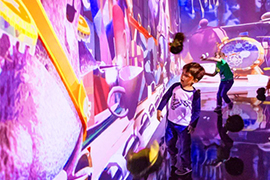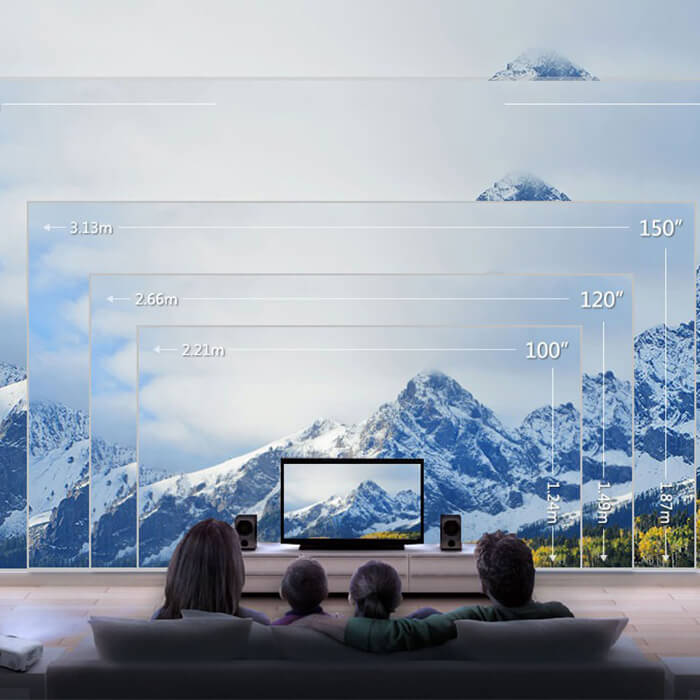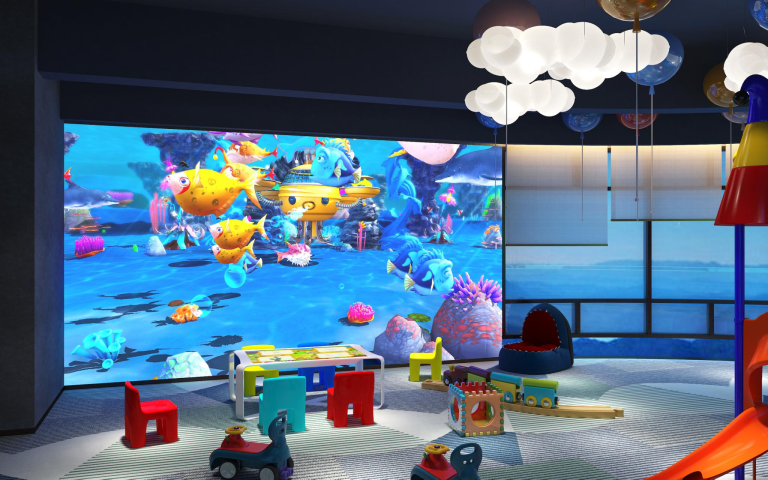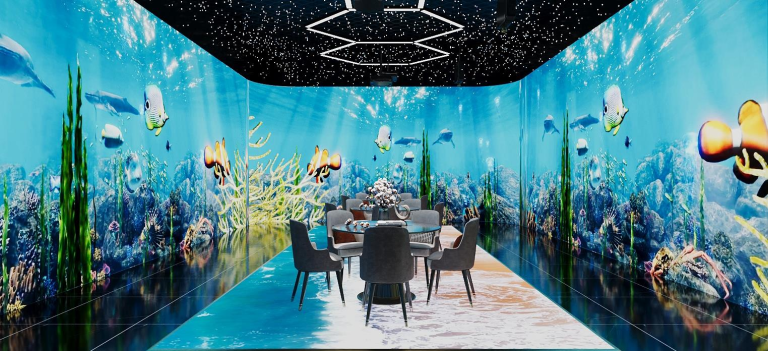Interactive Game Walls: Shaping the Interactive Future
Step into a world where technology meets play, a world where interactive game walls revolutionize the way we engage and entertain. Welcome to the power of play, where possibilities are endless and imaginations run wild. Interactive game walls have taken the gaming experience to a whole new level, providing a dynamic and immersive environment for people of all ages to enjoy.
These game walls are not just a source of entertainment; they are also powerful tools for education and engagement. With their captivating visuals and intuitive interfaces, interactive game walls bring learning to life in a way that is both effective and fun.
Whether it’s in a classroom setting, a corporate office, or even a retail space, interactive game walls have the potential to transform any environment into a playground of creativity and innovation. From interactive puzzles and quizzes to immersive storytelling and team-building exercises, these game walls offer endless possibilities for engagement and interaction.
Join us as we explore the power of play and discover the potential of interactive game walls. Get ready to unleash your imagination and experience the magic of play like never before.

Benefits of interactive game walls
Interactive game walls offer a multitude of benefits that go beyond traditional forms of entertainment. One of the key advantages is their ability to promote active engagement. Unlike passive forms of entertainment like television or movies, interactive game walls require participants to actively interact with the content. This not only stimulates the mind but also promotes physical activity, making it an ideal option for schools, offices, and recreational spaces.
Moreover, interactive game walls have been proven to enhance learning experiences. By combining gaming elements with educational content, these walls create an immersive environment that captures the attention and interest of learners. Whether it’s math problems, historical facts, or language skills, interactive game walls make learning engaging and enjoyable.
Another significant benefit is the versatility of interactive game walls. They can be easily customized to suit various needs and preferences. From adjusting the difficulty level of games to incorporating branding elements, these walls can be tailored to meet the specific requirements of any setting. This adaptability makes them suitable for a wide range of industries, including education, corporate, hospitality, and retail.
Examples of successful interactive game walls
To truly understand the power of interactive game walls, let’s take a look at some successful examples. The “Wall of Games” at the Children’s Museum in Indianapolis is a prime example of how interactive game walls can create a fun and educational experience for children. The wall features a variety of games that teach children about science, math, and art in an interactive and engaging way.
In the corporate world, the “Collaboration Wall” at Google’s headquarters is a testament to the effectiveness of interactive game walls in fostering teamwork and creativity. This wall allows employees to collaborate on projects, brainstorm ideas, and solve problems together in a visually stimulating and interactive environment.
How interactive game walls work
Interactive game walls are powered by a combination of hardware and software components. The hardware typically consists of a large display screen or projection surface, motion sensors, and a processing unit. The software, on the other hand, includes the games or interactive content that users can engage with.
When a user interacts with the game wall, the motion sensors detect their movements and translate them into commands that the software understands. This allows users to control the game or interact with the content using gestures, touch, or other input methods. The processing unit then processes these commands and generates the appropriate visual and auditory feedback, creating an immersive and interactive experience.
Designing an interactive game wall
Designing an interactive game wall involves careful consideration of various factors, including the target audience, the intended purpose, and the available space. The first step is to define the goals and objectives of the game wall. Is it meant to educate, entertain, or engage? Once the purpose is established, the next step is to determine the appropriate content and interactive elements.
The visual design of the game wall is also crucial for creating an immersive experience. The graphics, colors, and animations should align with the intended theme and engage the users. It is essential to strike a balance between aesthetics and functionality to ensure that the interactive game wall is visually appealing while also being easy to navigate and interact with.
Integrating interactive game walls into different industries
Interactive game walls have the potential to transform various industries by providing unique and engaging experiences. In the education sector, these walls can be used to make learning more interactive and enjoyable for students. Whether it’s a history lesson, a science experiment, or a language exercise, interactive game walls can bring educational content to life and make it more accessible and engaging.
In the corporate world, interactive game walls can be used for team-building activities, training sessions, and brainstorming sessions. By creating a collaborative and interactive environment, these walls foster creativity, encourage communication, and enhance problem-solving skills.
Even in the retail industry, interactive game walls can be utilized to create memorable shopping experiences. These walls can showcase product information, provide interactive product demonstrations, or even offer virtual try-on experiences. By incorporating gamification elements, retailers can engage customers and encourage them to explore and interact with their products in a fun and unique way.
Tips for maximizing engagement with interactive game walls
To maximize engagement with interactive game walls, there are several tips and strategies to keep in mind. First and foremost, it is crucial to know your audience. Understanding the demographics, preferences, and interests of your target audience will help you create content that resonates with them.
Secondly, it is essential to keep the content fresh and updated. Regularly adding new games, challenges, or interactive elements will keep users coming back for more. Additionally, incorporating social features like leaderboards or multiplayer options can further enhance engagement by fostering competition and collaboration.
Furthermore, it is crucial to provide clear instructions and feedback. Users should know how to interact with the game wall and understand the feedback they receive when they perform certain actions. Clear and concise instructions, along with visual cues, can help users navigate and interact with the content effectively.
Tools and technology for creating interactive game walls
Creating interactive game walls requires a combination of hardware and software tools. For the hardware components, options range from large touchscreens, projectors, and motion sensors to interactive floor projection systems. The choice of hardware depends on factors such as budget, available space, and specific requirements.
On the software side, there are various game development platforms and content creation tools available. These tools allow developers to create interactive games and content without extensive coding knowledge. Some popular options include Unity, Unreal Engine, and Adobe Animate.
Case studies of businesses using interactive game walls
To gain further insight into the effectiveness of interactive game walls, let’s explore a few case studies of businesses that have successfully implemented them. One such example is Marriott Hotels, which introduced interactive game walls in their lobbies to provide a unique and engaging experience for guests. These walls feature interactive maps, trivia games, and other content that helps guests navigate the hotel and learn about local attractions.
Another case study comes from McDonald’s, which incorporated interactive game walls in some of their restaurants. These walls feature games and activities that entertain and engage children while they wait for their meals. This not only enhances the dining experience for families but also provides an opportunity for McDonald’s to promote their brand and products.
https://youtu.be/LBIa04WiQtQ?si=sSjmTIWU3XLUzL1B
Conclusion: The future of interactive game walls
As technology continues to advance, the potential of interactive game walls is only beginning to be realized. From education and corporate training to retail and entertainment, these walls have the power to transform any environment into a playground of creativity and innovation.
The benefits of interactive game walls, such as active engagement, enhanced learning experiences, and versatility, make them a valuable tool in various industries. With the right design, content, and strategies, businesses and organizations can harness the power of play and create unique and immersive experiences that captivate and inspire.
So, step into the world of interactive game walls and unleash your imagination. Embrace the power of play and experience the magic that awaits. The possibilities are endless, and the journey has just begun, Learn more about wall projections from here, and, if you’re ready to revolutionize your walls, reach out to us! Let’s make the floor interactive now..







